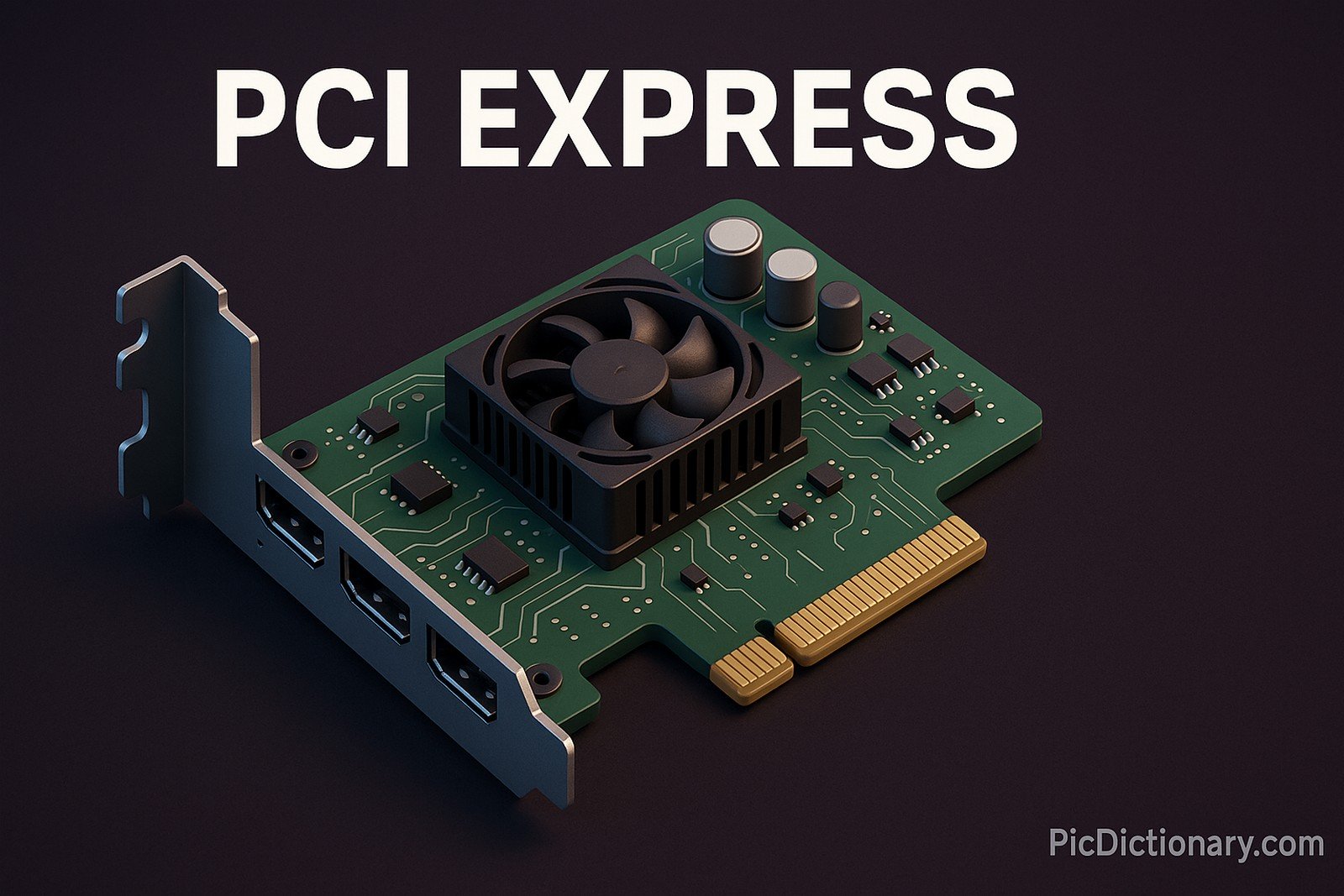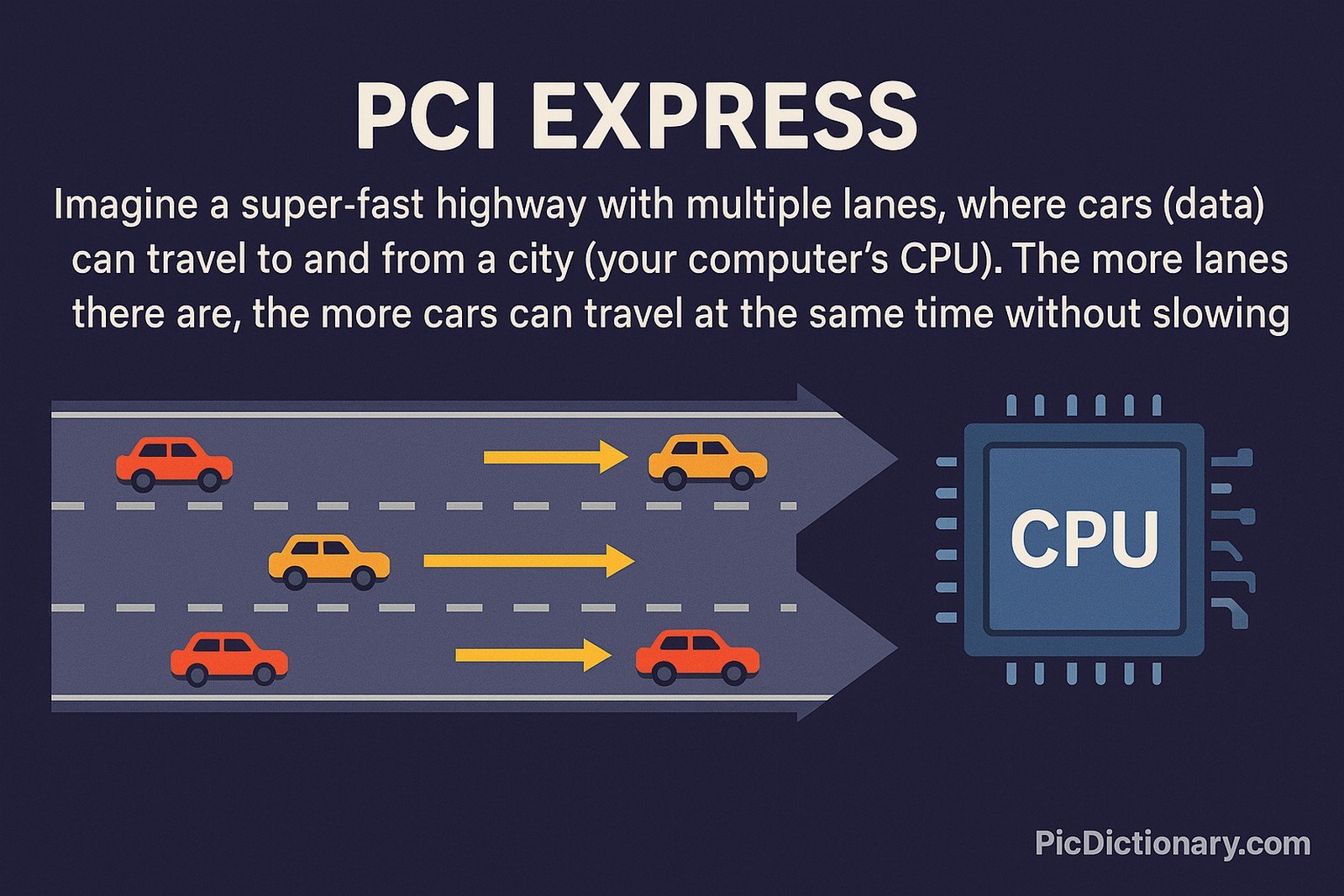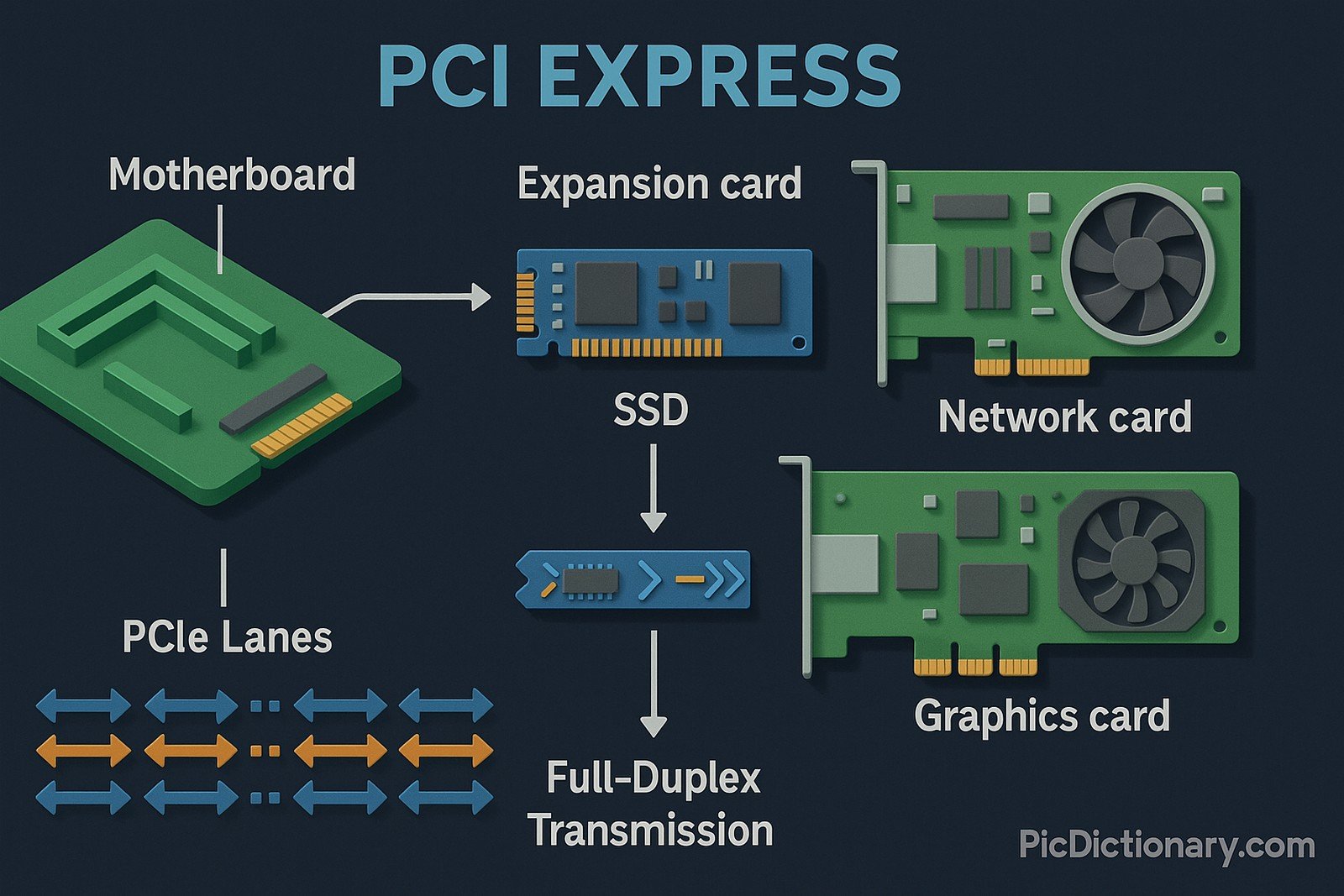PCI Express (Peripheral Component Interconnect Express)

Quick Navigation:
- PCI Express Definition
- PCI Express Explained Easy
- PCI Express Origin
- PCI Express Etymology
- PCI Express Usage Trends
- PCI Express Usage
- PCI Express Examples in Context
- PCI Express FAQ
- PCI Express Related Words
- Did you know?
PCI Express Definition
PCI Express (PCIe) is a high-speed serial computer expansion bus standard designed to replace older bus standards like PCI and AGP. It provides fast communication between the motherboard and connected hardware components such as graphics cards, solid-state drives (SSDs), and network cards. PCIe uses multiple lanes, each consisting of two pairs of wires for sending and receiving data, allowing scalable bandwidth from x1 to x16 or more. Its architecture supports full-duplex data transmission and higher data rates, making it ideal for data-intensive applications in gaming, AI, and enterprise servers.
PCI Express Explained Easy
Imagine a super-fast highway with multiple lanes, where cars (data) can travel to and from a city (your computer's CPU). The more lanes there are, the more cars can travel at the same time without slowing down. PCI Express is like that highway for your computer, letting important components talk quickly to the brain of the computer so everything runs smoothly and fast.
PCI Express Origin
PCI Express was developed by Intel in collaboration with industry partners and introduced in 2003 to address the limitations of the aging PCI and AGP standards. Its release marked a leap forward in data transfer speeds and scalability, paving the way for modern computing requirements in consumer and enterprise hardware.
PCI Express Etymology
The term "PCI Express" is derived from its predecessor PCI, with the addition of "Express" to signify the higher speed and enhanced performance compared to the older standard.
PCI Express Usage Trends
Since its introduction, PCI Express has seen continuous updates with multiple generations (Gen 1 through Gen 6 and beyond), each doubling data rates. The trend reflects increasing demand for faster data communication in devices like gaming PCs, data centers, and AI accelerators. PCIe remains the standard interconnect for high-performance computing and continues evolving alongside emerging technologies.
PCI Express Usage
- Formal/Technical Tagging: Motherboard Interface, Computer Hardware, Data Transfer Technology
- Typical Collocations: "PCI Express slot," "PCIe bandwidth," "PCI Express graphics card," "PCIe Gen 4 NVMe SSD"
PCI Express Examples in Context
- A modern gaming PC typically uses a PCI Express x16 slot to install a powerful graphics card.
- Enterprise servers utilize multiple PCIe lanes to connect high-speed storage devices.
- PCI Express is essential for AI workstations that require GPUs with massive data throughput.
PCI Express FAQ
- What is PCI Express?
PCI Express is a high-speed expansion bus standard used to connect components like graphics cards and SSDs to the computer motherboard. - What does PCIe x16 mean?
It refers to a PCI Express slot with 16 lanes, allowing higher data transfer speeds. - How is PCI Express different from PCI?
PCIe is much faster and uses serial communication, while PCI used slower parallel communication. - What generation of PCI Express is the latest?
As of now, PCIe Gen 6 is the latest standard, offering up to 64 GT/s per lane. - Can PCIe devices be backward compatible?
Yes, PCIe slots and devices are generally backward and forward compatible. - Why is PCIe important for gaming?
PCIe allows high-bandwidth connections for graphics cards, enabling better performance in games. - Is PCIe only used for graphics cards?
No, it’s also used for storage drives, network cards, and other expansion devices. - How do PCIe lanes affect performance?
More lanes mean more data can be transferred simultaneously, increasing performance. - Can I use a PCIe 4.0 card in a PCIe 3.0 slot?
Yes, but it will operate at the PCIe 3.0 speed. - How do I know what PCIe version my motherboard supports?
Check the motherboard manual or specifications on the manufacturer’s website.

PCI Express Related Words
- Categories/Topics: Computer Hardware, High-Speed Data Transfer, Motherboard Architecture
Did you know?
The PCI Express standard is so vital that even the fastest SSDs today rely on it. PCIe-based NVMe SSDs can achieve read/write speeds of up to 14,000 MB/s, revolutionizing everything from gaming load times to large data analytics.
PicDictionary.com is an online dictionary in pictures. If you have questions or suggestions, please reach out to us on WhatsApp or Twitter.Authors | Arjun Vishnu | @ArjunAndVishnu

I am Vishnu. I like AI, Linux, Single Board Computers, and Cloud Computing. I create the web & video content, and I also write for popular websites.
My younger brother, Arjun handles image & video editing. Together, we run a YouTube Channel that's focused on reviewing gadgets and explaining technology.



Comments powered by CComment